The future for kangaroo paws is bright. It’s an emerging global plant
A blue kangaroo paw? Yes – and it’s a stunner. It’s one of a range of novel-coloured kangaroo paws developed at Perth’s Kings Park.
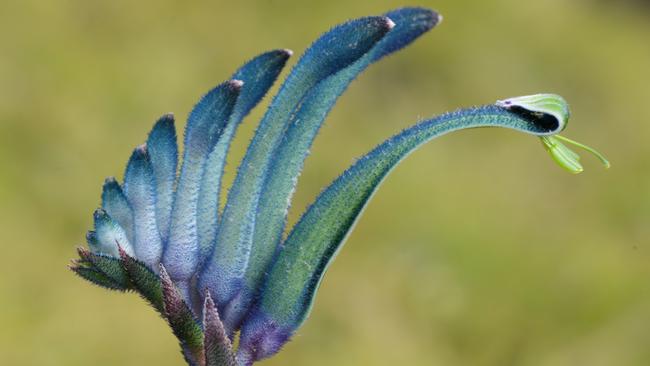
A blue kangaroo paw? Yes – and this world first is a stunner. ‘Masquerade’ actually combines blue, green and purple pigments in an iridescent bloom that wows everyone who sees it.
It is one of a range of novel-coloured kangaroo paws developed through groundbreaking hybridisation work at Kings Park and Botanic Garden in Perth. The renowned facility has bred more than 50 new varieties of Australian native plants over several decades, both as ornamental plants and cut flowers, with the aim of encouraging us to plant more West Australian natives in home gardens and commercial landscapes. Their focus is on producing healthier plants that use less water and provide food for native fauna, with other attributes such as better and longer flowering, and tolerance to heat and cold. They’ve also developed international markets for our unique plants, to great acclaim.
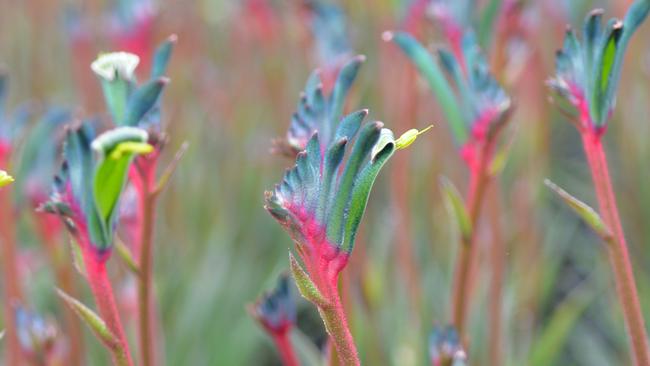
Kangaroo paws (Anigozanthos) are endemic to Western Australia. The colours of the 11 species are mainly red, green and yellow; the red-and-green A. manglesii is the state’s floral emblem. Most are susceptible to two fungal diseases, rust and ink spot disease, that disfigure the leaves and can kill the plants. Breeding disease-resistant varieties was the initial focus for the team, led by Digby Growns, over the past decade.
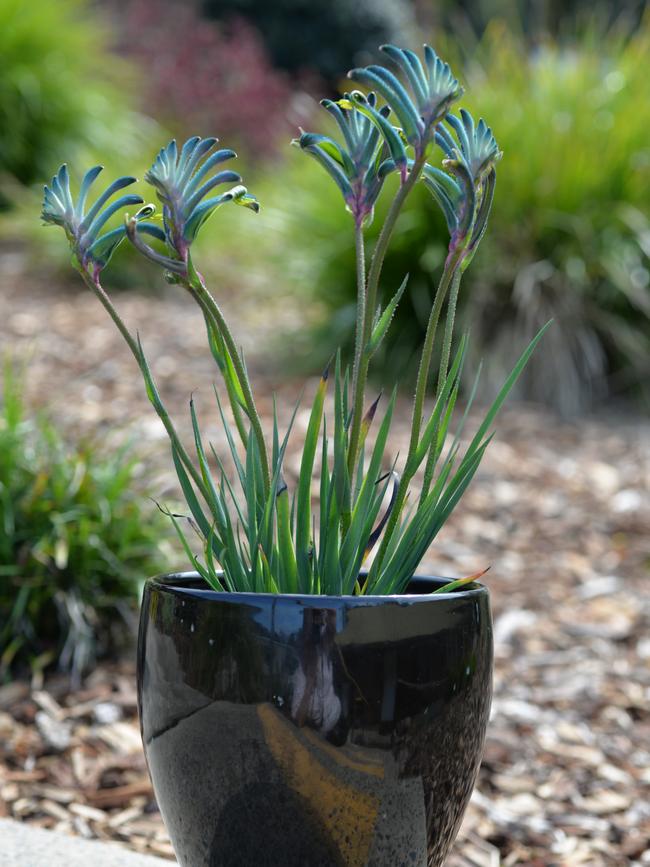
By constantly selecting the superior plants from generations of cross-pollinating, then re-crossing between them (a technique called recurrent selection), the team produced a range of hybrids that were highly disease tolerant. The surprise was that novel colours started to appear, including the first blue in 2013 that was startlingly different to anything seen before. “It was teal blue and had absolute wow factor,” says Growns. “I knew we had to target this one.” He estimates that 99.9 per cent of the crosses they make are discarded.
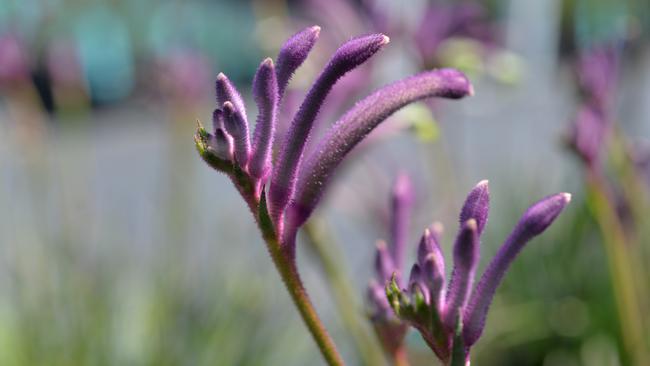
That first blue was not disease tolerant, but by working on its pedigree, other blues that had the desired health attributes started to appear in the program. In 2018, the mid-sized hybrid destined to become ‘Masquerade’ was selected for further trialling, prior to its commercial release under the Celebrations series banner. The other four in the series, available now locally and soon globally, are ‘Cocktail’ (vivid blue and purple blooms), ‘Aussie Spirit’ (yellow and blue-green), ‘Carnivale’ (purple with blue-green foliage) and ‘Fireworks’ (electric pink and blue).
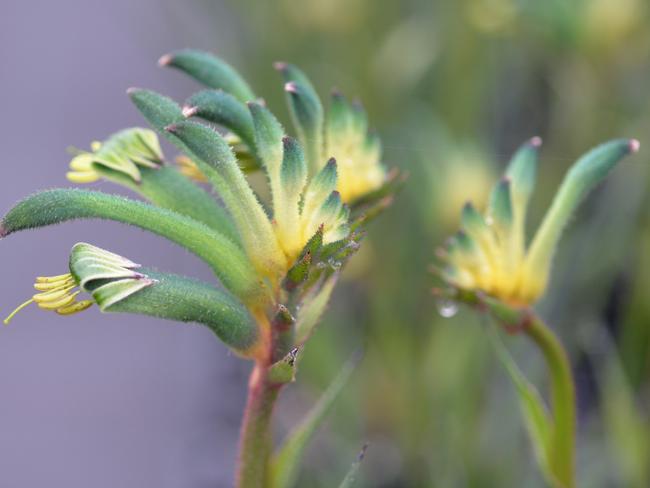
Further research is underway to unlock the metabolic pathways that produce the pigments. “The future for kangaroo paws is bright,” Growns says. “It’s an emerging global plant. We will have highly disease tolerant, tough hybrids in different sizes and colours coming out for years to come.”
How to grow
Give kangaroo paws full sun, acidic and well-drained soil, and good airflow
The more sun, the more intense the flower colours
They grow very well in containers
Apply slow-release fertiliser several times a year
Cut the old foliage to the ground in late summer to promote fresh growth and flowering in spring
Q&A
My Pittosporum ‘Silver Sheen’ hedge of 10 years is twiggy and bare in the middle with most leaves at the top. How can I rejuvenate it and encourage denser growth? Catherine Bowdern, Adelaide Hills
Unfortunately, these shrubs do not respond well to heavy pruning. To have a dense and bushy hedge you needed to prune them lightly and often, top and sides, from the beginning. They also need direct sun and go bare when shaded. You can try a hard prune in spring but the thicker branches might not reshoot. If shady, consider replacing with a better species.
What flowering plants would suit my 3m x 3m front garden, shaded by tall hedges? The cottage is 200 years old and I love the classic English country garden look. Patrick Buxton, Hobart
Try small hydrangeas (eg You and Me series), Japanese windflowers, fuchsias, astilbes, bergenias, heucheras, hostas, hellebores, sweet violets, cyclamen, forget-me-nots, primulas and polyanthus. Consider reducing the height of the hedges, as more light means more flowers.
How can I get rid of clover from my lawn? I use an organic weed killer but it also kills the lawn underneath. P.J. Fleming, Woody Point, Qld
The organic herbicides are non-selective. Clover flourishes when nitrogen is lacking, so fertilising is the first strategy. Check the pH is 6.5 - 7. You can hand-weed using an old knife or use “lawn sand” – equal parts dry sand, iron sulphate and ammonium sulphate; drop a good pinch on damp weeds (beware, it stains hands and paths). Selective lawn herbicides are available too.
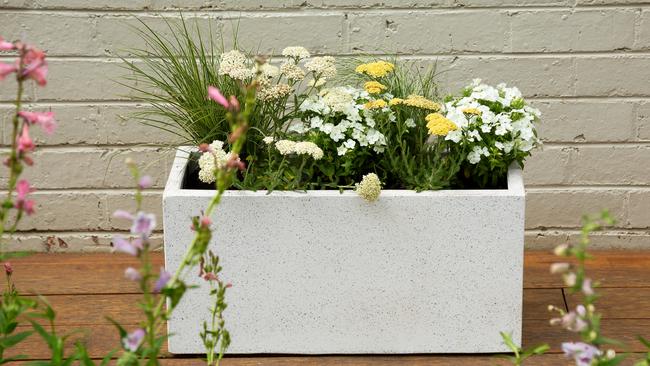
Send your questions to: helenyoungtwig@gmail.com or Helen Young, PO Box 3098, Willoughby North, NSW 2068. The best question for August wins an 80cm-long Precinct Lite Trough Planter in white, worth $128, from Northcote Pottery.




To join the conversation, please log in. Don't have an account? Register
Join the conversation, you are commenting as Logout